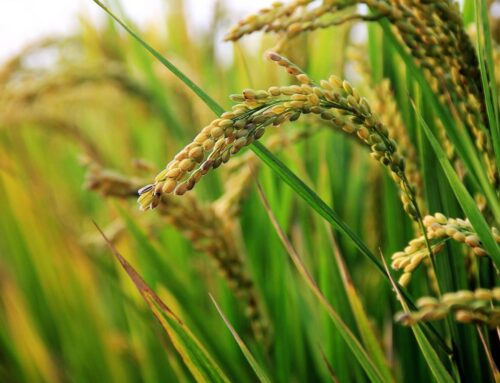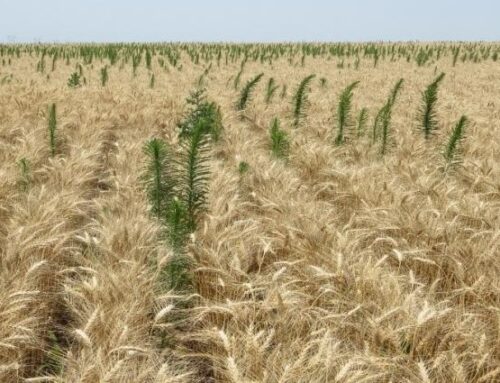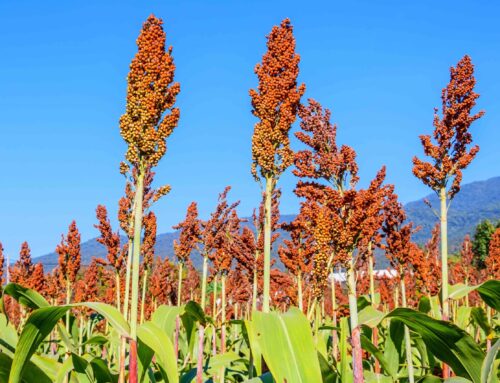
You can split crop nutrients into three categories: macronutrients, secondary macronutrients, and micronutrients.
You can split crop nutrients into three categories: macronutrients, secondary macronutrients, and micronutrients.
You know a lot about the macros – nitrogen, phosphorus, and potassium – and probably a little about the secondary macros: calcium, magnesium, and sulfur.
What about the micros? How much boron, copper, iron, manganese, zinc, molybdenum, chloride, and nickel do corn and soybeans need?
“Usually, it’s less than 1 pound per acre,” says Dan Kaiser, a University of Minnesota Extension nutrient management specialist. Boron, for example, is taken up by plants at only about .1 pound per acre. Copper is even less.
Still, if they’re deficient, they can cost you 2 to 5 bushels an acre, says Kaiser.
FOLLOWING IS KAISER’S PRIMER ON CORN AND SOYBEAN MICRONUTRIENTS.
Boron (B): This one is tricky. A little is needed for proper cell wall development, but too much can be toxic, especially to soybeans.
“It’s a pretty fine line,” says Kaiser. “Too much has been shown to reduce soybeans by 3 to 5 bushels per acre. Normally, I don’t recommend applying boron.”
If deficiencies exist, they’re usually on droughty or sandy soils, he says.
3 to 5: The yield loss in soybeans that excess boron can cause. Source: University of Minnesota
Copper (Cu): This micronutrient promotes seed production in plants and has a role in chlorophyll and enzyme activity.
“If it is deficient, it can look a little like frost damage, with spindly leaves that die at the ends. Deficiencies are more common in small grains. It’s seldom an issue in the Midwest,” he says.
When copper deficiencies do appear, they’re more prevalent in organic or peaty soils, he says.
Iron (Fe): This deficiency is the most troublesome of all the micronutrients, says Kaiser. A deficiency in soybeans, known as iron deficiency chlorosis, decreases chlorophyll synthesis. It can be seen as yellowing leaves and stunted plants in patches of a field and is not related to a lack of iron in the soil. The problem is the inability of the plants to solubilize iron from the soil.
In corn, it can be confused with sulfur deficiency. “I’ve seen problems that I thought were iron deficiency, but they turned out to be sulfur, which is much more common. Iron deficiency is rare,” Kaiser says.
You should do both soil tests and leaf-tissue tests to confirm a deficiency of iron.
Manganese (Mn): A deficiency of this micronutrient, which plays a role in photosynthesis, can turn plants to an olive green with faint striping. Crop deficiencies are most common in soils that have historically tested low in manganese. Kaiser says such soils aren’t found in his state of Minnesota.
“Research has not shown much response to manganese applications,” he says.
Glyphosate-resistant soybeans do have problems with manganese uptake, he adds, but it usually doesn’t result in yield loss. “Soybean plants appear to recover from poor uptake of manganese following glyphosate applications,” he says.
Drier years tend to show more deficiency problems, especially when the plants are stressed at the time of glyphosate applications.
Zinc (Zn): This micro, which plays a role in conversion of starches to sugars and other metabolic processes, can sometimes be deficient in high-pH soils, and cool and wet soils. It’s not known to ever be deficient in soybeans, says Kaiser, but sometimes you can get a return on investment in corn if soil tests show a deficiency in available zinc. Deficient corn shows white striping bands on leaves.
“We have researched the addition of chelated zinc applied in-furrow as a starter for corn,” says Kaiser. “We didn’t find it to increase yield in soils that should supply adequate zinc. Thus, we wouldn’t suggest you apply zinc across all corn acres. It may be a better option to variable-rate apply zinc, targeting field areas testing 0.5 ppm or less with 10 to 15 pounds of available zinc per acre. They can be pretty small pockets of fields, so you have to ask yourself if it’s worth it.”
Molybdenum (Mo), chloride (Cl), nickel (Ni): These are almost micros of the micronutrients, says Kaiser. “We have not been able to demonstrate that molybdenum or nickel should be applied to corn or soybeans,” he says. “Chloride may be beneficial to wheat.
“The secret with any micronutrient is knowing what crops may be sensitive to a particular deficiency and knowing which yield conditions may limit availability,” he says.
Q&A WITH THE EXPERT
Dan Kaiser, University of Minnesota Extension nutrient management specialist, answers questions about crop fertility.
Q: Which testing is best: soil tests or leaf-tissue tests?
Kaiser: Both can be helpful if you want to fine-tune your nutrient management. I’m leery of tissue tests early in the season, particularly if it’s really wet. That seems to influence the uptake of nutrients.
Also, if you do tissue tests, be aware of hybrid and variety variability. It can be really wide. It might have to do with the growth stage of a particular cultivar.
Q: If I budget a certain amount for my fertility program, should I put something toward the micros?
Kaiser: If you have limited dollars, make sure you have the macronutrients N, P, and K at optimal levels. Research does not show that the micros would give a better return on your fertilizer investment.
Q: What about putting micros on the leaves as a foliar application?
Kaiser: Can you penetrate the leaves and get the nutrients to the roots? Most of these nutrients are immobile. If they only get on the leaves, they may stay there. You should be feeding the plant roots for best results. Research doesn’t support foliar fertilizer of annual crops.
Read the original article here – https://californiaagnet.com/2020/08/21/insect-deterring-sorghum-compounds-may-be-eco-friendly-pesticide




